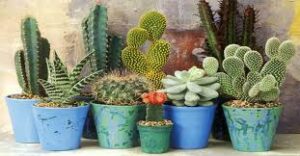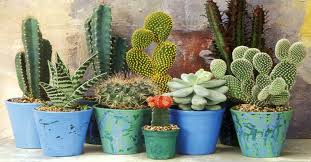The Role of Sacred Symbols in Traditional Ceremonies: Unveiling the Power of Spiritual Figures

Throughout history, sacred symbols and spiritual figures have played a pivotal role in traditional ceremonies worldwide, particularly in East Asian cultures. These objects or figures, often imbued with deep symbolic meaning, are believed to possess spiritual powers that can influence the outcomes of various rituals. In the context of traditional Chinese culture, this includes the use of sacred animals, deities, and symbolic objects that have been passed down for centuries.
The role of these spiritual figures in traditional ceremonies goes beyond mere decoration; they are considered conduits of divine energy, protectors of the family or community, and agents of prosperity, health, and success. Understanding their significance and how they are used in rituals can offer valuable insights into how cultural beliefs shape not only individual lives but entire societies.
In this article, we will explore the key sacred figures in traditional ceremonies, their symbolic meanings, and how they are employed to invoke positive energy, divine protection, and blessings. We will examine the role of these spiritual figures in various types of ceremonies, from family rituals to community-wide celebrations, and explore the continued relevance of these practices in the modern world.
1. Sacred Animals in Traditional Ceremonies
In many traditional cultures, animals are viewed as powerful symbols that embody certain virtues, characteristics, and energies. The use of sacred animals in rituals often symbolizes the call for specific blessings, protection, or auspiciousness in various aspects of life. In traditional Chinese culture, a range of animals are revered for their spiritual significance and are often incorporated into ceremonies.
The Dragon: Symbol of Power, Prosperity, and Protection
The dragon is one of the most iconic sacred animals in Chinese culture, symbolizing strength, authority, and prosperity. In traditional ceremonies, the dragon is often invoked to bring about good fortune, protection, and success. It is believed to possess the ability to control the elements, particularly water, and is associated with the power to eliminate negative energy.
The dragon plays a prominent role in many significant ceremonies, including the Chinese New Year celebration and the Dragon Boat Festival. During these festivals, dragon dances and dragon boat races are performed to celebrate the arrival of spring, encourage prosperity, and ward off evil spirits. The dragon, often depicted as a long, serpentine creature with scales, antler-like horns, and claws, embodies both strength and wisdom, making it a revered symbol in Chinese spiritual practice.
The Phoenix: Symbol of Rebirth and Harmony
The phoenix, a mythological bird known for its ability to regenerate and rise from its own ashes, is another important symbol in traditional Chinese rituals. The phoenix represents harmony, renewal, and resurrection. It is often used in ceremonies related to marriage, as it symbolizes the balance between yin and yang—the feminine and masculine forces.
In some rituals, the phoenix is paired with the dragon to represent the union of heaven and earth, male and female, and the flow of life itself. It is also believed that the phoenix’s presence in ceremonies can bring about lasting peace and prosperity, making it an essential figure in the traditional rituals of Chinese families.
The Tiger: Symbol of Strength and Courage
The tiger, revered for its power and fearlessness, is frequently invoked during traditional Chinese ceremonies as a protector of the home and family. It is believed that the tiger can ward off evil spirits and protect individuals from misfortune. As a symbol of bravery and strength, the tiger is often associated with warriors and those in leadership roles.
In Feng Shui, the tiger is considered one of the four celestial animals that govern specific areas of life. It is often placed in strategic positions within the home or workplace to bring stability, security, and positive energy. In ceremonies that seek to protect the home from negative influences, the tiger plays an essential role in ensuring that its strength and protective energy are channeled effectively.
2. Sacred Figures in Religious and Ancestor Worship Ceremonies
In addition to sacred animals, figures of deities, ancestors, and gods also hold great importance in traditional ceremonies. These figures represent divine forces that are believed to offer protection, guidance, and blessings to individuals and communities.
The Kitchen God (Zao Jun): Protector of the Home
In Chinese tradition, the Kitchen God, or Zao Jun, is considered the guardian of the household and is an essential figure in many family ceremonies. Each year, during the Lunar New Year preparations, families honor the Kitchen God with offerings of incense, food, and symbolic gifts. The Kitchen God is believed to report to the Jade Emperor in heaven on the family’s behavior and the state of the household.
During the Lunar New Year, families will place images of Zao Jun in the kitchen to ensure a prosperous and harmonious year ahead. The Kitchen God is honored with rituals to protect the family’s health, wealth, and relationships. In Feng Shui practices, it is also believed that the placement of the Kitchen God’s image in the home can improve the energy in the kitchen and ensure positive flow within the household.
Ancestor Worship and the Role of Ancestral Tablets
Ancestor worship has been an integral part of Chinese cultural practices for thousands of years. During significant rituals, such as the Qingming Festival (Tomb Sweeping Day), families honor their ancestors by offering food, incense, and prayers. Ancestral tablets, often carved with the names of deceased relatives, play a central role in these ceremonies.
Ancestor worship is a way to honor the spirits of the deceased, seeking their blessings and guidance. In Feng Shui, it is believed that by maintaining a strong connection with one’s ancestors, families can ensure a harmonious flow of energy within their homes. The placement of ancestral tablets, usually in a place of honor in the home, is believed to create a direct link between the living and the deceased, allowing for the exchange of positive energy and the continuation of good fortune.
The Jade Emperor: Ruler of Heaven
The Jade Emperor is considered the supreme deity in Chinese mythology and is often invoked during major ceremonies to bring about divine favor. As the ruler of heaven, the Jade Emperor governs all aspects of life and is believed to control the fate of individuals. In rituals related to the Lunar New Year, people may offer prayers to the Jade Emperor in hopes of gaining prosperity, longevity, and good health for the upcoming year.
In traditional ceremonies, the Jade Emperor is often symbolized by statues, paintings, or written representations that are placed in altars or sacred spaces. Worshiping the Jade Emperor ensures that the individual or family receives divine protection, allowing them to navigate challenges and achieve success.
3. Sacred Objects and Talismans in Rituals
In addition to animals and deities, sacred objects and talismans are often used in traditional ceremonies to enhance the spiritual power of the ritual and ensure its success. These objects, imbued with symbolic meaning, are believed to act as conduits for positive energy and divine protection.
The Fu Lu Shou Trio: Symbols of Prosperity, Wealth, and Longevity
The Fu Lu Shou trio—comprising the gods of fortune, prosperity, and longevity—is frequently invoked in Chinese ceremonies to promote well-being. Fu is the god of happiness and good fortune, Lu represents wealth and success, and Shou symbolizes longevity and health. Together, these three gods are believed to bring balance to an individual’s life, ensuring a prosperous and harmonious existence.
In traditional ceremonies, figurines of Fu, Lu, and Shou are often placed on altars or in homes to attract good fortune, wealth, and long life. These figures are particularly important during the Lunar New Year, when families seek blessings for the coming year.
The Feng Shui Bagua Mirror: A Protector of the Home
The Bagua mirror is another important spiritual tool in Feng Shui ceremonies, used to reflect negative energy and prevent harm. The mirror, often hung above doorways or windows, is believed to deflect harmful forces and protect the inhabitants of the home. In traditional rituals, the Bagua mirror is placed in strategic locations to ensure that only positive energy enters the home.
The Bagua mirror is also used in ceremonies that aim to remove bad luck or misfortune. Its use is rooted in the belief that the proper alignment of energy within the home can prevent obstacles and bring about success, health, and happiness.
4. The Influence of Sacred Symbols in Modern Times
While traditional ceremonies have deep cultural roots, the role of sacred figures, animals, and symbols in modern-day life continues to thrive. In contemporary China, for example, the Dragon Boat Festival and the Chinese New Year are still widely celebrated, with individuals and families using sacred symbols to honor their heritage and invoke good fortune. The practices surrounding ancestor worship, Feng Shui, and the use of sacred figures in daily life continue to influence the way people live, work, and interact with their surroundings.
In businesses, sacred figures such as the Laughing Buddha or the Money Frog are commonly used to enhance prosperity and bring about financial success. The role of sacred animals, deities, and symbols in traditional ceremonies remains a powerful tool for fostering positive energy and spiritual connection.
Conclusion
The role of sacred figures in traditional ceremonies is an integral part of cultural heritage and spiritual practice. These figures, whether they are sacred animals, deities, or symbolic objects, hold deep meaning and are believed to channel positive energy, protect against harm, and bring prosperity. From the mighty dragon to the wise phoenix, these spiritual symbols continue to play an important role in shaping the course of life for individuals and communities alike. As such, they serve as reminders of the importance of balance, harmony, and divine protection in both ritualistic practices and everyday life. By understanding the profound significance of these symbols, we can better appreciate the rich traditions that have shaped the cultural and spiritual landscapes of various societies across the world.


